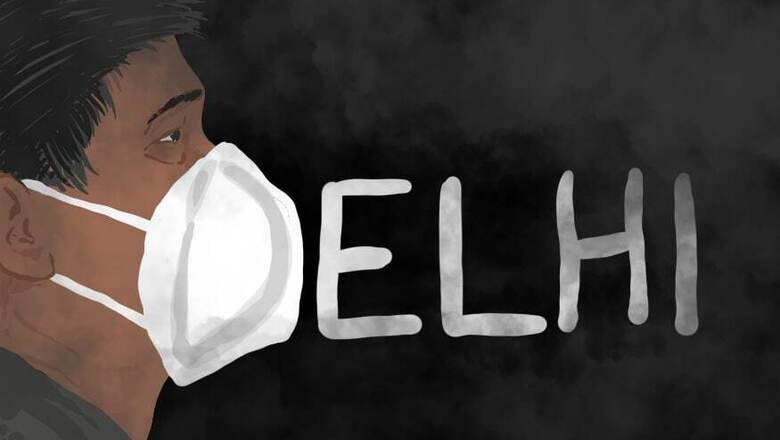
views
The ‘parali’ farm fires in the fields of Punjab, Haryana and western Uttar Pradesh has been effectively reduced in some areas under the directions of the Supreme Court. The Supreme Court passed the order when for once the BJP-led central government and the Aam Aadmi Party (AAP)-led Delhi government decided to put their heads together and lay blame for pollution in country’s capital at the doors of the voiceless farmers.
They did so to save their skin, lest the court come down heavily on them for allowing Delhi to turn into a gas chamber by a well-designed system of governance deficit, which over a period of time has turned into fine art of electoral politics. But the nature this time around has decided to teach a lesson. The pollution has refused to go and the Supreme Court has now ordered closure of schools in Delhi and surrounding areas till November 15.
Car rationing, the two-week-long odd-even scheme, too is hurtling towards end, but pollution refuses to subside.
It was just one day in the month of November this year that farm fire from neighbouring states made an abnormally high contribution towards pollution in the Capital touching a figure of 38 percent. Their average contribution towards Delhi’s pollution is in fact around 10 percent.
Then what’s choking Delhi? As The biggest contributor is automobile pollution, which has made a steady increase over the past five to six years thanks to a continuously shrinking public transport network.
AAP claims, public transport would be revolutionised by giving free ride to women on the Delhi Transport Corporation (DTC)-run buses. Give them a free ride by all means but first get buses to ply on the roads.
In the past six years, the average kilometres covered daily by the DTC fleet has come down from 9.68 lakh to 6.32 lakh. This has brought down the number of passengers carried per day from 46.77 lakh to 31.01 lakh. This has all happened because the number of buses in the DTC fleet has down from 6,204 in March 2013 to 3,796 in the present. Due to its shrinking fleet, the public transporter has been forced to shut down its depots. In the past six years the number of operational depots has come down from 46 to 39.
99.15 percent buses of the operational DTC fleet are over-aged and not fuel-efficient, thus adding their bit to the pollution in the city. In March 2015, when Arvind Kejriwal was reelected as chief minister, the number of overaged buses in the DTC fleet was low as 19.74 percent and the current status of 99.15 percent speaks volumes for the governance deficit in the sector of public transport, free ride for women passengers notwithstanding.
We have discussed in these columns about how the tussle between the city and the central government has delayed the expansion of the metro network. Another initiative of the previous governments at the Centre and in Delhi — Regional Rapid Transit System (RRTS) for mobility and connectivity in the National Capital Region (NCR) has been deferred due to turf war between the BJP government at the Centre and the AAP government in the state.
The RRTS, initiated by then Urban Development Minister Ajay Maken, was to be implemented by National Capital Region Transport Corporation (NCRTC). In July 2013, the Union Cabinet had approved constitution of NCRTC under the Companies Act with seed capital of Rs 100 crores for designing, developing, implementing, financing, operating and maintaining Regional Rapid Transit system (RRTS) to provide comfortable and fast transit to NCR towns and meet the high growth in transport demand. The NCRTC was to develop three corridors: Delhi-Ghaziabad-Meerut, Delhi-Gurgaon-Rewari-Alwar and Delhi-Sonipat-Panipat. The project has since been put on the back burner because of the Delhi government’s objections.
What has this led to? A study by the Indian Institute of Tropical Meteorology shows a growth of 15.6 percent in pollution caused by vehicular emission in the last decade. Their first ever high-resolution emission inventory shows that it has increased from 25.4 percent in 2010 to 41 percent in 2018. The fallout has been the increase in the numbers of private vehicles.
During this time span (between 2010-2018), the number of registered vehicles in Delhi has gone up from 57.3 lakh to 110 lakh. It must be noted that between 2013-18 just one bus was added to the DTC fleet and rest all other vehicles registered during this period have contributed towards private operations with the exception of auto-rickshaws which anyway contribute less than one percent of the total number of registered vehicles on the capital’s roads.
According to a data released by Centre for Science and Environment (CSE) sometime back, in terms of pollution, carbon emissions and energy consumption by urban commuter, Delhi tops leaving its closest rival behind by several miles. The position at the top should shame those responsible for the governance of the city for it reflects so vividly on their callous functioning and least concern for accountable governance.
(The writer is a senior journalist and political analyst. Views expressed are personal)
















Comments
0 comment